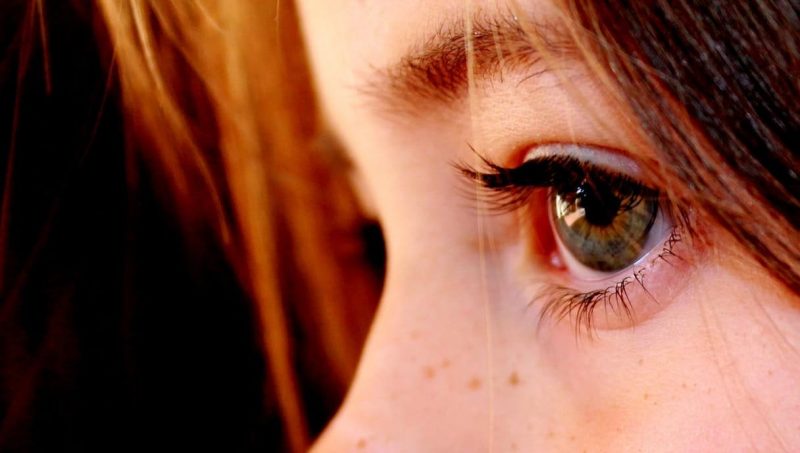The sensory receptors They are part of the nervous system, since they are nerve endings located in the sensory organs. For instance: taste buds, eyes, olfactory bulb.
The sensory organs they are the skin, the nose, the tongue, the eyes and the ears.
The stimuli received by the sensory receptors are transmitted through the nervous system to the cerebral cortex. These stimuli can provoke voluntary or involuntary reactions. For example, the sensation of cold perceived by the sensory receptors of the skin can cause a voluntary reaction to bundle up and also an involuntary reaction to shiver.
When the nervous system receives a stimulus from sensory receptors, it issues an order to muscles and glands, which thus function as effectors, that is, those that manifest organic responses.
The answer stimuli can be motor (the effector is a muscle) or hormonal (the effector is a gland).
Sensory receptors have certain characteristics:
- They are specific. Each receptor is sensitive to a particular type of stimulus. For example, only the receptors on the tongue are capable of feeling taste.
- They adapt. When a stimulus is persistent, the nervous reaction decreases.
- Excitability. It is the ability to react to stimuli, relating a stimulus to a specific area of the brain and to a reaction.
- They respond to a coding. The greater the intensity of the stimulus, the more nerve impulses are sent.
According to the origin of the stimulus that they are prepared to receive, sensory receptors are classified into:
- External receptors. They are the nerve cell units that are capable of receiving stimuli from the environment outside the body.
- Internoceptors. They are those that detect changes in the internal environment of the body, such as body temperature, the composition and acidity of the blood, blood pressure and the concentrations of carbon dioxide and oxygen.
- Proprioceptors. They are those that detect the sensations of change of position, for example, when moving the head or the extremities.
Examples of sensory receptors
Sensory receptors mechanoreceptors:
Skin
Pressure, heat and cold receptors in the skin. They form what we usually call “touch.”
- Ruffini corpuscles: They are peripheral thermoreceptors, which capture heat.
- Krause corpuscles: They are the peripheral thermoreceptors that capture the cold.
- Vater-Pacini corpuscles: Those that perceive pressure on the skin.
- Merkel’s discs also feel the pressure.
- Since by touch we also perceive pain, nociceptors are found in the skin, that is, pain receptors. More specifically, they are mechanoreceptors, which detect cutting stimuli in the skin.
- Meiisner’s corpuscles follow gentle friction, like caresses.
Tongue
Here is the sense of taste.
- Taste buds. They are chemoreceptors. There are approximately 10,000 nerve endings that are distributed over the surface of the tongue. Each type of chemoreceptor is specific for one type of taste: sweet, salty, sour, and bitter. All types of chemoreceptors are distributed throughout the tongue, but each type is more concentrated in a certain area. For example, chemoreceptors for sweet are found at the tip of the tongue, while those adapted to perceive bitterness are at the bottom of the tongue.
Nose
Here is the sense of smell.
- Olfactory bulb and its nerve branches. The nerve branches are located at the end of the nostrils (at the top) and receive input from both the nose and the mouth. So part of what we think of as flavor actually comes from aromas. In these branches are olfactory cells that transmit impulses collected by the olfactory bulb, which connects with the olfactory nerve, which in turn transmits these impulses to the cerebral cortex. Olfactory cells come from the yellow pituitary, a mucosa found in the upper part of the nostrils. These cells can perceive seven basic scents: camphor, musky, floral, minty, ethereal, pungent and putrid. However, there are thousands of combinations between these seven scents.
Eyes

Here is the sense of sight.
- The eyes. They are made up of the iris (the colored part of the eye), the pupil (the black part of the eye) and the sclera (the white part of the eye). The eyes are protected by the upper and lower lids. In them, the eyelashes protect them from dust. Tears are also a form of protection since they perform a constant cleaning, while the skull represents a rigid protection, since the eyes are in the eye sockets, surrounded by bone. Each eye moves thanks to four muscles. The retina is located on the inside of the eye, lining the inner walls. The retina is the sensory receptor that converts visual stimuli into nerve impulses; however, the correct functioning of sight also depends on the curvature of the cornea, that is, the front and transparent part of the eye that covers the iris and pupil. A greater or lesser curvature causes that the image does not reach the retina and therefore cannot be interpreted by the brain correctly.
Hearing
In this organ there are both the receptors responsible for hearing, as well as those for balance.
- Cochlea. It is the receptor found in the inner ear and receives sound vibrations and transmits them in the form of nerve impulses through the auditory nerve, which takes them to the brain. Before reaching the inner ear, sound enters through the outer ear (pinna or atrium) and then through the middle ear, which receives sound vibrations through the eardrum. These vibrations are transmitted to the inner ear (where the cochlea is located) through tiny bones called the hammer, anvil, and stapes.
- Semicircular canals. They are also found in the inner ear. These are three tubes that contain endolymph, a liquid that begins to circulate when the head turns, thanks to otoliths, which are small crystals sensitive to movement.
